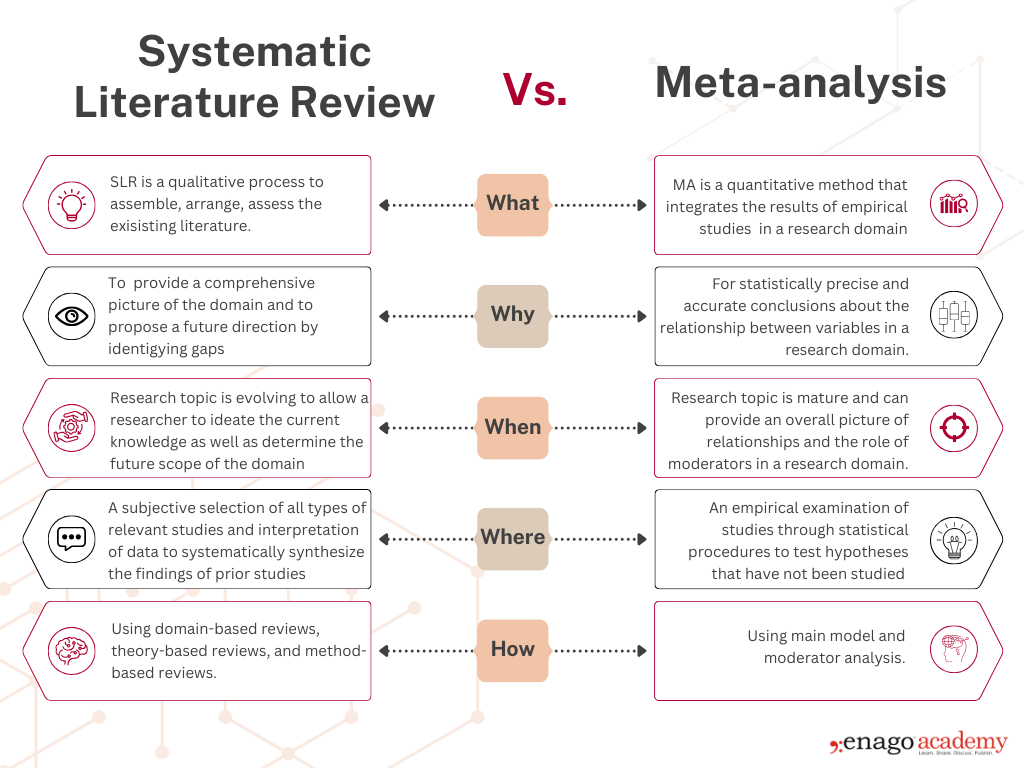What is a Systematic Literature Review?
A systematic literature review is a detailed summary of research on a specific topic. It involves gathering, analyzing, and critically evaluating data from published studies to provide a clear and reliable synthesis of the evidence. An SLR is the gold standard for summarizing existing research in any domain. The process begins with a clearly defined research question. Researchers widely use PICO (Population, Intervention, Comparison, Outcome) and SPIDER (Sample, Phenomenon of Interest, Design, Evaluation, Research type) as search frameworks for literature reviews. They primarily apply PICO to clinical and intervention-focused research questions, while they turn to SPIDER as a valuable alternative for qualitative research. An SLR involves a comprehensive search strategy to identify all relevant studies. Then you must meticulously screen the studies using predefined inclusion and exclusion criteria to ensure transparency and reproducibility.What is a Meta-Analysis?
Meta-analysis is a subset of systematic reviews that uses statistical techniques to integrate and analyze data from multiple studies. These are highly effective when the included studies share similar methodologies, interventions, and outcome measures. Meta-analyses resolve conflicting findings across studies and identify overall trends. SLRs that include meta-analysis, provide a quantifiable understanding of the evidence, helping researchers and decision-makers derive actionable insights.Difference Between Systematic Literature Reviews and Meta-Analyses
 The above infographic shows that SLRs and meta-analysis are closely related methods that complement each other in evidence synthesis. While a meta-analysis focuses on statistically combining data from multiple studies to derive a comprehensive result, it relies on the structured approach of an SLR to identify and evaluate relevant research. To conduct a high-quality meta-analysis, understanding the key steps in a systematic review is essential.
The above infographic shows that SLRs and meta-analysis are closely related methods that complement each other in evidence synthesis. While a meta-analysis focuses on statistically combining data from multiple studies to derive a comprehensive result, it relies on the structured approach of an SLR to identify and evaluate relevant research. To conduct a high-quality meta-analysis, understanding the key steps in a systematic review is essential.
